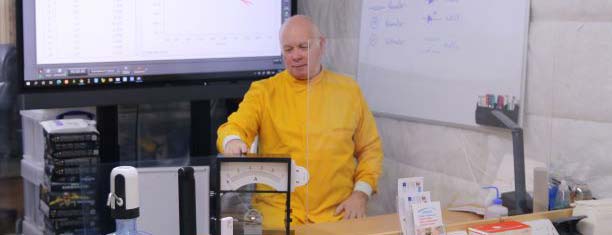Wednesday 8 February 2023
fossil fish
Looking at a prehistoric fish fossil under a low-power microscope. Very little has changed in these millions of years. The students found this one more interesting than the ammonites
Tuesday 7 February 2023
The not given formulae
Just when the students thought they had learnt all the rules in the A level Maths book, I gave them even more, followed by the 1/2 angle formula - all derived from the formulae they had learnt - but they weren't happy.
Nylon Rope Trick
Saturday 4 February 2023
Making a salt from an insoluble metal oxide
To make a salt from an insoluble metal oxide and an acid, the metal oxide must be reacted with the acid to produce a salt and water. The reaction can be represented by the following equation:
Metal oxide + Acid → Salt + Water
For example, if the metal oxide is magnesium oxide (ZnO) and the acid is hydrochloric acid (HCl), the reaction would be:
ZnO + 2HCl → ZnCl2 + H2O
In this reaction, the salt produced is magnesium chloride (ZnCl2).
Friday 3 February 2023
Magnetic Field Strength
Thursday 2 February 2023
Model of a cell
A cell contains several structures, including:
Nucleus - The cell's control centre, containing DNA and regulating cell activity.
Endoplasmic reticulum (ER) - A network of membranes involved in protein synthesis and lipid metabolism.
Golgi apparatus - A stack of flattened membranes that modify, sort, and package proteins and lipids for transport to other parts or outside the cell.
Mitochondria - The cell's powerhouse, responsible for producing energy through cellular respiration.
Lysosomes - Small, spherical structures that contain digestive enzymes and break down waste and cellular debris.
Vacuoles - Large, fluid-filled organelles that store materials such as water, salts, and pigments.
Microfilaments and Microtubules - Tiny protein fibres that help maintain cell shape and support the cellular movement.
Peroxisomes - Small organelles containing enzymes involved in metabolic processes, including the breakdown of fatty acids and detoxifying harmful substances.
Spinning a wire connected to a beam galvanometer
A level Math
Students working out just what formulae are and are not in the exam sheet. Then, the panic can begin to memorise the formulae that are not...

-
Negative feedback is a difficult concept to try and get over so I tried using a balance board and the @pascoscientific smart cart strapped...
-
Getting a classic set of results for the titration of NaOH and HCl is not that difficult but it is nice when we can get students to this ...
-
Mechanics: the grand meeting of Maths & Physics! Using strobe light & a ball drop for gravity-acceleration calculations and SUVAT fo...















